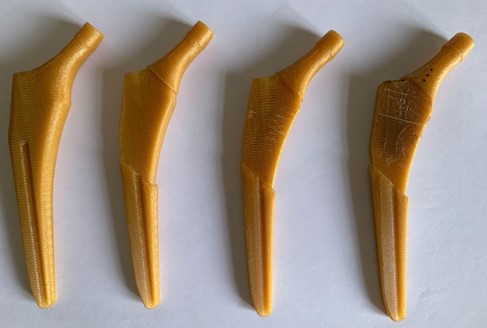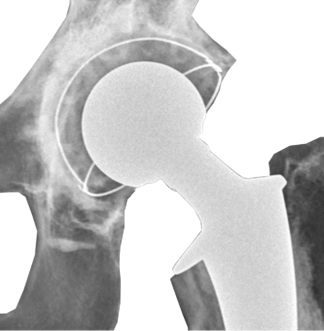The materials used in the manufacturing of prostheses for traumatology and orthopedic surgery (such as stainless steels and titanium alloys) share a common drawback: the lack of long-term biocompatibility and bioactivity. To address this issue and extend the lifespan of these components, the use of cemented material on metallic implantable surfaces is recommended. This approach aims to create a true osteoinductive barrier while simultaneously enhancing protection against infections.
In this context, researchers from the University of Cádiz (UCA) have developed a biomaterial applicable as an adhesive coating/bone substitute for implantable surfaces.
Researchers at UCA have developed a composite biomaterial based on hydroxyapatite (HA) and tricalcium phosphate (TCP) derived from a sugar beet byproduct. This compound, combined with a commercially available medical-grade epoxy adhesive, forms a coating that prepares implantable surfaces, promoting osteoinduction. Moreover, this biomaterial enhances parameters such as cell viability compared to other commercially available alternatives for this application. In addition to the biomaterial, the research team has also developed and optimized an environmentally friendly method for obtaining this biocomposite.

The research team has demonstrated the efficacy of the biomaterial in preliminary in vitro tests, showing positive results in parameters such as cell viability. The process for industrial-scale synthesis of the biomaterial is already defined, with the next step requiring human trials to validate the technology in a real environment.
Benefits:
- Enhances the adhesion of surgical and dental prosthetics.
- Provides a cost-effective alternative to other commercially available products for implantable surfaces.
- Promotes bone tissue generation at the prosthesis-bone interface, improving acceptance and extending the prosthesis’s lifespan.
- Enables the valorization of a byproduct from the agri-food industry.
The represented institution is looking for a collaboration that leads to commercial exploitation of the presented invention in the near future.
Institution: Universidad de Cádiz
TRL: 3-4
Protection status: Patent Application.
Contact: Carlos G. Gredilla / c.gredilla@viromii.com

